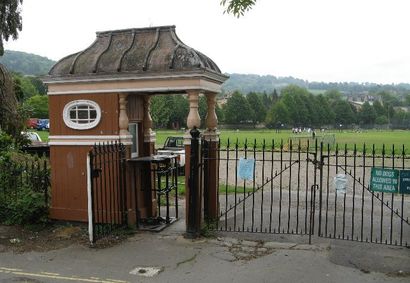
Heritage
Bath is in competition with many other cities for its ongoing success and its present leading edge in education services and shopping is rooted in its heritage environment. Business is attracted to the city on account of its heritage and amenity, but there is much to be feared from abdicating responsibility to market forces; the market has proven itself to be woefully inadequate in confronting climate change and inequality...
In 1987 Bath was designated a World Heritage Site, having been recognised by UNESCO as a place of outstanding universal value for its architecture, town planning, landscape and archaelogical remains endowing it with a national and international value which transcends politics. It enjoys a ‘whole city’ designation. Comments made a personal views WITHOUT PREJUDICE.
PPG 15 requiring WHS issues to be a key material consideration in evaluating planning applications was given statutory recognition in the 1997 Bath City Local Plan and detailed in the City of Bath WHS Management Plan which confirms that Bath’s parks and open spaces as both a valuable feature of the World Heritage Site and a popular amenity for the local community. The Management Plan recorded the value of the river and potential as a landscape corridor through Bath, together with BANES commitment to become a centre of excellence for urban heritage management and conservation.
Described as a country town of honey coloured stone squares, terraces and villas in a green setting, the open spaces of public realm in front of, and around listed buildings is as much a part of the world heritage site townscape as the fabric itself - this is what is seen and used by visitors and taxpayers - and the Recreation Ground with its frontage to the river Avon provides such a foreground to and setting for the tudor Abbey to the west, to the palladian Great Pulteney Street to the north, and to John Adam’s Pulteney Bridge and North Parade, all iconic features of the WHS.
Key facets of the designation and promotional recommendations of Tourism Bath are the views out of the city, the prospect south from Empire Parade towards the green hills of Bathwick and Claverton probably the most photographed after the Royal Crescent , the view of Pulteney Bridge from North Parade and so on. From higher up in the city, the swathe of the river with its adjacent trees and the patchwork of green areas are all iconic features of the city, supporting its heritage status.
As a consequence of its heritage, Bath has been subject matter for artists from Gainsborough to Austen and so many others, and equally the subject of criticism from Pevsner to Spence and many others, proving that its social, environmental and visual significance in not just local, but national and global.
The Recreation Ground is Bath’s St James’ Park, Paris’ Tuilleries, Madrid’s Retiro and is the very essence of urbanity at the core of the city. Bathwick Fields possesses a social history as significant as its visual history. The open space is a green lung at the core which helps to combat traffic pollution from surrounding roads. It is a part of the family silver which cannot be given up to commercial exploitation.
Urban heritage management is key to the city’s future as a centre of excellence in a fast changing now global economy and both private and public sector have a role to play in recognition of its features and the maintenance of its fabric. Unlike tourist magnets in other parts of Europe, desperate to expand public realm at their core, Bath is already endowed with the community facility of its Recreation Ground ; progressive infringement of its green is a weakening of essential heritage, the economic base of the city and of a significant utility for the emerging west country LEP.
